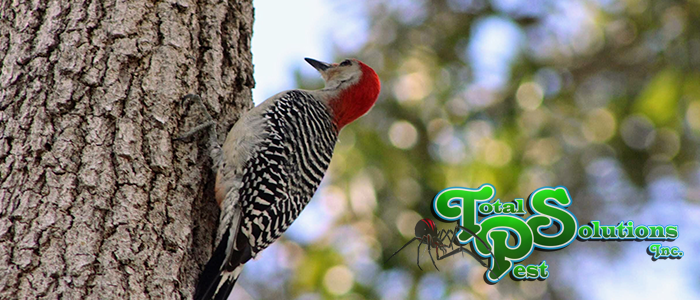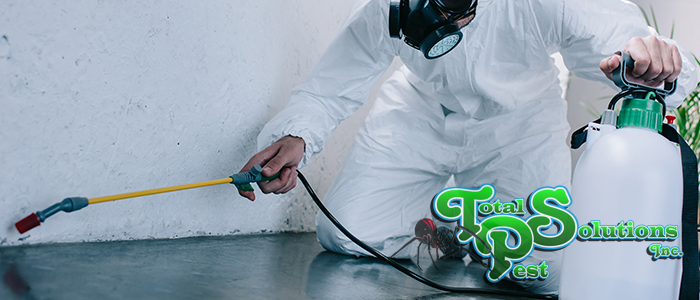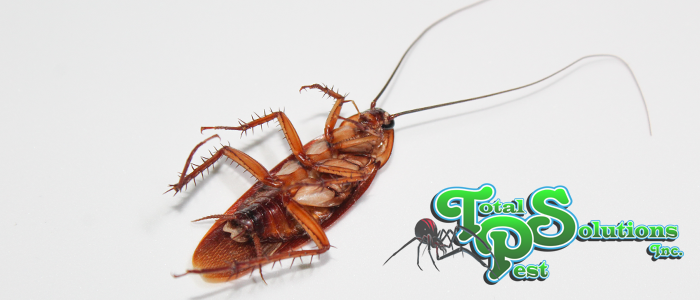
Pileated Woodpecker – Guest or Pest?
Woodpeckers are a popular sight for birdwatchers. They’re bright and distinct and bold as can be. That bright red crest atop many woodpeckers is a welcome sight for many homeowners and hikers who take a moment to gaze at the curious creatures. While heading out into the woodlands is the best way to see them, many woodpeckers occupy Florida neighborhoods. Some are seasonal, like the yellow-bellied sapsucker, downy woodpecker, or Northern flickers. Like the topic of this article, some can be found year-round. But, what’s so special about the pileated woodpecker?
What is a Pileated Woodpecker?
Pileated woodpeckers are the largest variety of woodpeckers in the state. They’re also active year-round. The huge crest on their heads makes them a distinct bird to see – As does their size. Most adults are nearly the size of a crow! Weighing in at over twelve ounces, they’re heavyweights of the avian world. Unfortunately, this can mean trouble for your home and property.
You can find pileated woodpeckers in old, established forests. You can even find them in drowned forests! The important thing is that they occupy places with plenty of deadwood. You can attract them to your yard with suet feeders. These woodpeckers make a very recognizable rectangular hole if you’re looking for their nests.
Pileated woodpeckers have a good reputation because they mostly feed on carpenter ants, major pests. So if they start knocking holes in your home, it can be a sign of an infestation. Even worse: They could be pounding open a nesting hole. If you have a woodpecker making a hole in your wall, it’s important to have an animal control service relocate the bird. This damage can be serious – The holes they make can be huge.
This creates a huge entrance for pests in your home when the woodpeckers move on. If you didn’t have an infestation before the birds move in, you absolutely will once they leave.
What to Do if a Woodpecker is Pecking at Your House
One of the most obvious solutions is to scare the bird away. Woodpeckers are very brave – You might scare them away into a tree, but they’ll go back to what they were doing as soon as you’re back inside. So instead, hang reflective materials where the birds are pecking. If the problem persists, consider calling animal control or checking for pests.
Pests Woodpeckers Eat
You’ll want to make sure your home doesn’t have carpenter ants because this is the main diet of the large woodpecker. Like pileated woodpeckers, carpenter ants make their homes in old wood. This includes treated wood used for homes. As these nests start very shallow, a woodpecker can easily smash into your home’s siding and get at the ants. Always check the places woodpeckers have been active for signs of pest infestation. For example, you may have an ant or termite problem the woodpecker is taking advantage of.
You should also check the trees woodpeckers are feeding on. Dangerous beetles, ants, and more can occupy trees. The woodpecker’s holes make trees more vulnerable to damage as well. Updating your home’s siding and patching holes can prevent pests from entering, as can regular chemical wood treatments. If you find a pileated woodpecker pecking your walls, it could be normal problematic behavior… Or a sign of something much worse. Give us a call immediately if you suspect woodpecker behavior related to pests in your home or trees.
This spring, be on the lookout for woodpeckers – Even if you don’t live in the woods!
continue reading
Related Posts
Don’t Let Pests Take Over: The Top 5 Signs You […]
Flea Infestations in Your Workplace – A Complete Guide for […]
Winning the War Against Kitchen Roach Infestations When it comes […]






